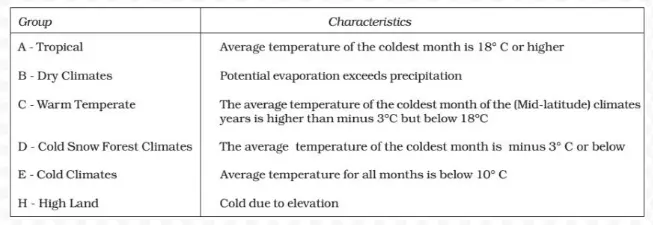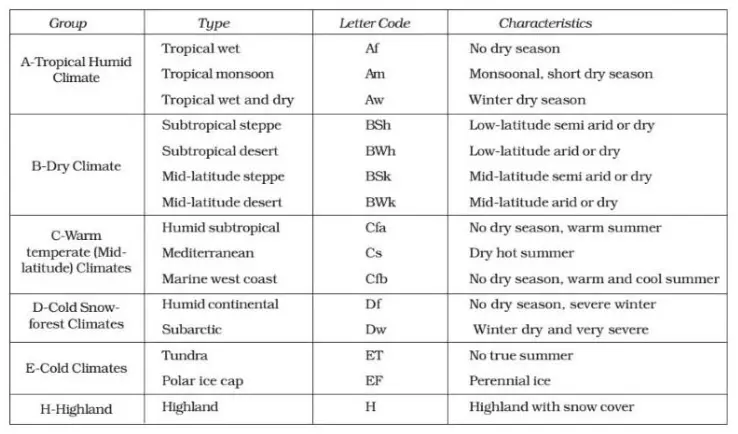![]() 29 Nov 2023
29 Nov 2023
This chapter provides a comprehensive overview of climate, covering koeppen’s climate classification of climate zones worldwide, and the different types of world climates. We’ll further analyze the climates of tropical and subtropical regions, studying the unique ecosystems that thrive there and finally we will discuss the crucial topic of climate change and Global warming.
The koeppen’s climate classification, developed by Wladimir Köppen, is a widely used system for classifying the world’s climates based on empirical data related to temperature and precipitation.
The koeppen’s climate classification system provides a concise way to describe and categorize the world’s climates, making it a valuable tool for researchers, climatologists, and geographers. It offers insights into the relationships between climate, vegetation, and other natural features.

Figure: Climatic Groups According to Koeppen

Figure: Sub-division of Koeppen’s climate classification
Climate |
Feature |
| Tropical Wet Climate
(Af) |
|
| Tropical Monsoon Climate
(Am) |
|
| Tropical Wet and Dry Climate
(Aw) |
|
Table: Types of Tropical Humid Climates
<div class="new-fform">
</div>